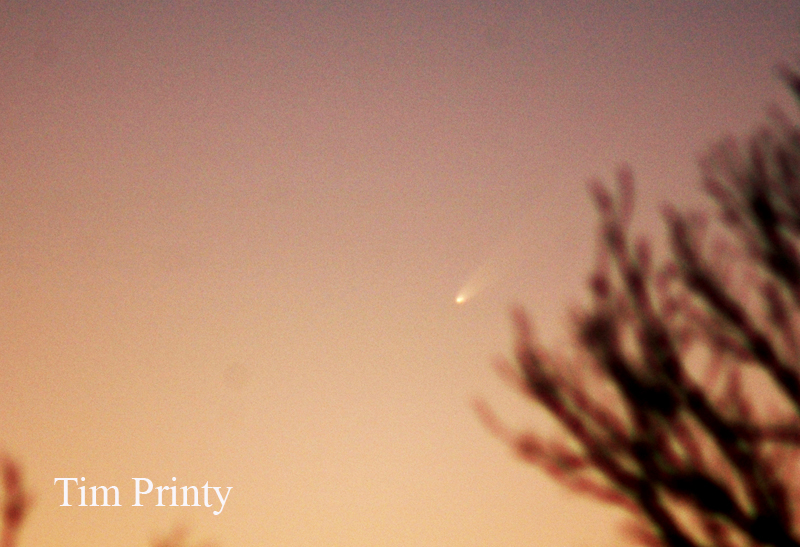
Comet McNaught (2006P1) January 2007
Comet McNaught was discovered on August 7, 2006 by R. H. McNaught as part of the Siding Spring Survey. It was apparent that the comet might be bright since its perihilion would occur at a distance of 0.17 AU on January 12, 2007. Initial estimates put the comet to be only magnitude +2-+4 but this magnitude estimate appeared to be inaccurate as observations of the comet showed it to be a few magnitudes brighter than expected through November and December 2006. However, even the most optomistic observers held back and did not expect the comet to be much to look at until it cleared the vicinity of the sun in late January 2007. Hindering accurate observations was the fact that the comet was at an elongation from the sun of no more than 15-16 degrees between early December and Perihilion. By the first week of January, observers began to report seeing the comet in twilight with a magnitude of around +2-+3. Observers in the extreme northern latitudes began to report seeing the comet around magnitude 0 around the 6th of January. I began to wonder if was possible for me to see the bright comet as well. What follows are my images of the comet that were taken that crazy second week in January.

This is my first attempt at locating the comet from my front yard. I had a partially obscurred horizon and really was not sure what I would see. About 25 minutes after sunset, I found the comet with 7X50 binoculars. The comet was pretty bright and I estimated it's magnitude -1 with a short half-degree long tail. Initially I tried to photograph it using my standard settings but that overexposed the image. Also, my 135mm lens wasn't strong enough. I switched to a 400mm F5.6 lens and then set the camera at ISO 200. Eventually, I managed to get some good exposures with an exposure time of 1/25 second. The resultant image above was a stack of seven of these images. This image is cropped and not the full frame.
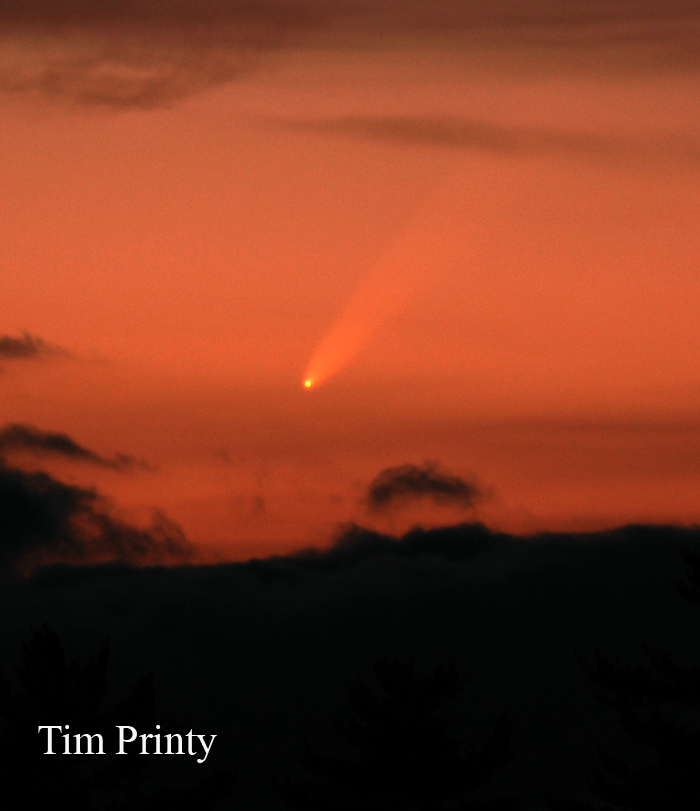
The next evening, I went out to Lake Massabesic east of town. I knew the horizon was flat there and expected to get some good shots using my 120mm F5 refractor (600mm FL). When I got to the lake, the sun had just set and I found Venus right away. I found the comet and centered it with my viewfinder just in time to see it disappear behind a bank of cumulus clouds. I started my clock drive and watched the scope track towards the horizon as the comet remained behind the cloud bank. Luckily, the comet found an open spot and I managed to get this 1/2 second exposure (D70 set at ISO 200) through the refractor.The comet could be seen naked eye at the time, I felt it was still about -1 and the head looked a lot like Mercury on a good apparation. The tail was still about 1/2 degree long. This image is cropped and not the full frame.
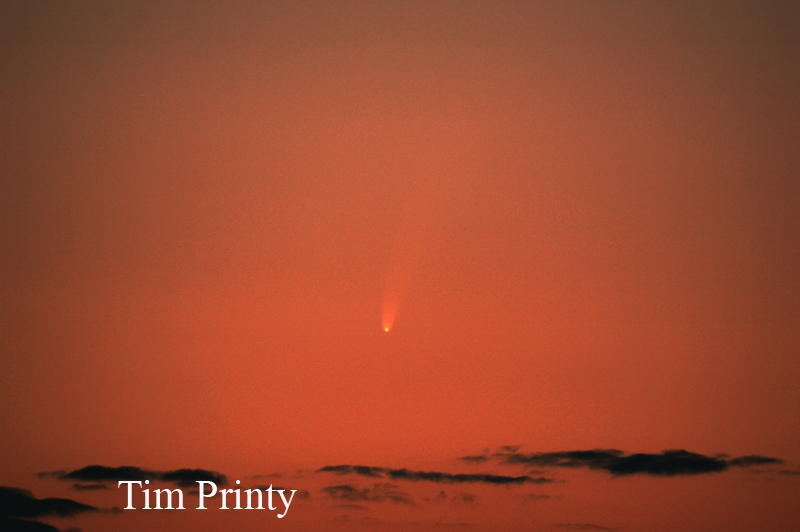
This image shows the comet on the 12th of January about 20 minutes after sunset. Clouds prevented me from imaging the comet on the preceding two days but the sky was clear on this evening. I saw the comet with 7X50s right at sunset and it was easily seen 15 minutes after sunset with the naked eye. The comet had brightened to about -3 and the tail could be seen to extend about two degrees even in bright twilight. The comet set rather rapidly. This is the full frame image of a 1/60 second exposure with my Nikon D70 set at ISO 200 (120mm F5 refractor).
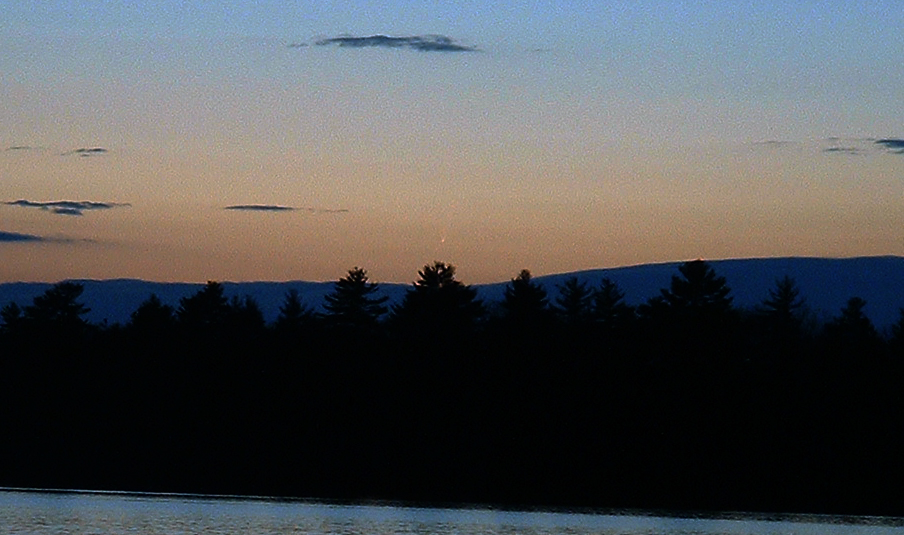
My wife Pollyann was with me and she took this photograph with a Fuji Finepix 2800Z, which is a typical point and shoot zoom 2.1MP camera. The autofocus gave her fits but she did get a pretty good one with a 2X zoom. This is a cropped image. The comet is recorded well and there is even a hint of tail.
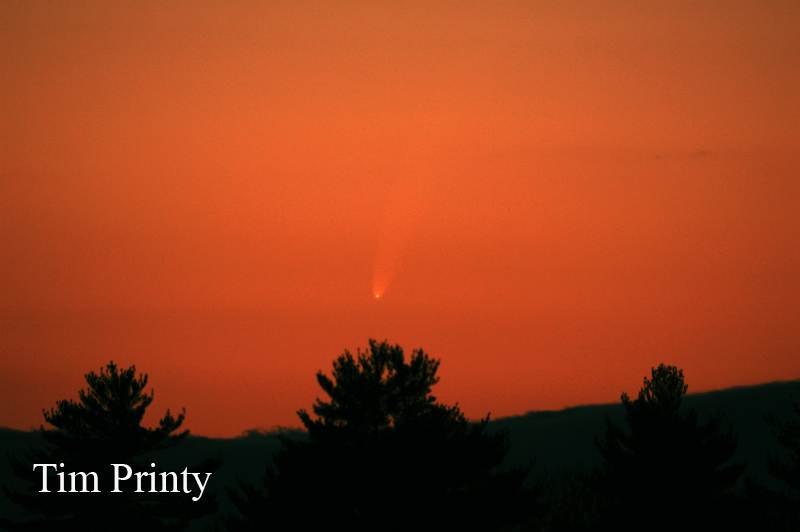
Just before sunset on the 12th, I managed to capture one more image using a 1/40 second exposure. Comet McNaught was going to put on quite a show in the southern Hemisphere for the next few weeks.